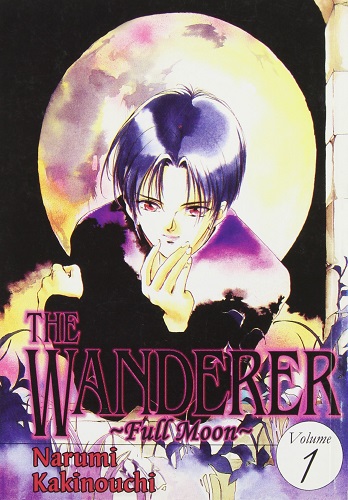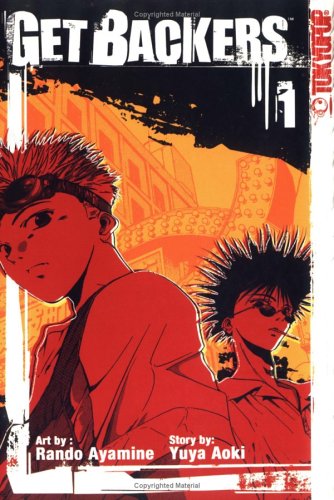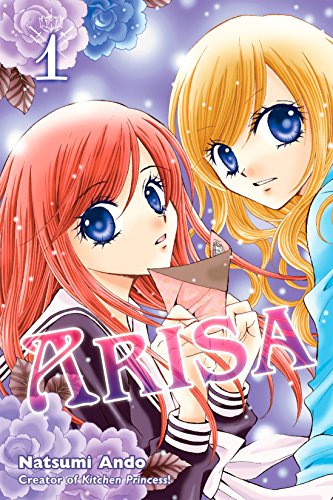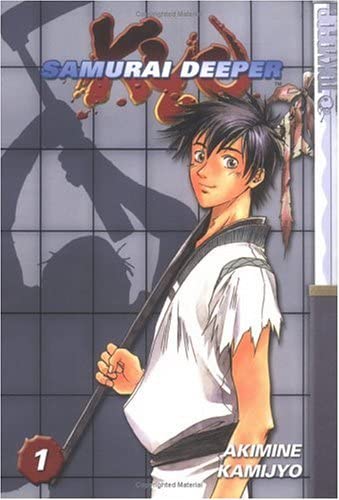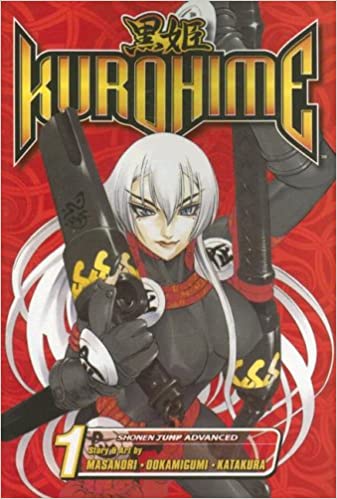The Wanderer is a shojo manga released in 1996 by Narumi Kakinouchi of Vampire Princess Miyu fame. The series is a part of the Vampire Princess Miyu series, but anyone can read The Wanderer as a stand alone manga series and it will still make perfect sense and be easy to follow, though readers who haven’t read Miyu will undoubtedly miss some small references. The series was serialized in Akita Shoten’s Suspiria magazine in 1996, and was collected into three volumes. The series was licensed in America by Studio Ironcat in 2003 and released two of the three volumes of the series, leaving The Wanderer incomplete in English. The story boasts a fun plot and interesting characters shrouded in mystery, but comes with a little baggage in the form of an awkward translation and odd printing layout of the first volume, but more on that later; I don’t like to harp on negatives too much, I would much rather focus on things I enjoyed about a series, but upon reaching the end of what was available in English, these were things that were still in the back of my mind regarding the series, so I will briefly explain why that is near the end. But first, let’s unearth the positive aspects of The Wanderer.
The story begins by introducing us to teenager Sei Kodo, who has recently awaken as a vampire, and is searching for the woman who awakened him as one. In his awakening as a vampire, he has been given multiple abilities, such as levitation and superhuman reflexes. In Sei’s awakening as a vampire, he has fallen in love with Yui, the woman who granted him his new life as a vampire, and his quest to find her is one fueled by adoration and romantic feelings rather than revenge. Sei has been transferring schools and traveling around Japan in hopes to meet Yui again. We first see Sei transfer into a high school in Kansai, Japan, and see not only the fruits of his search for Yui there, but also the relationships he builds with his peers at this school. This is short lived though, as Sei’s quest must continue, and after leaving his mark on a certain classmate there, he finds himself at Marssirinia Academy of the Arts, a prestigious music school rooted in European tradition. Sei’s time at the Japanese branch of the school leads him to meet a mysterious boy named Marie, who is a musical prodigy that may have some connection to Yui as well. Marie and Sei do not start out on good terms, and the tensions between them grow, and the mystery of Marie’s knowledge of Yui, as well as a mystery of the academy itself now slowly reveal themselves. The plot has some well done pacing for as short of a manga as it is (and even shorter for us stateside readers!) and has plenty of mystery and suspense to keep readers interested. The way things slowly unfold, only to shroud another thing in mystery and complicate the scenario engages readers to find out the truth about all of these events.
The characters are all well written, and their motivations stay consistent throughout the run of the story. Sei’s quest to find Yui never loses steam, and stays as his main motivation to find the woman he fell in love with stays as not only the focus of the story, but as the cornerstone to Sei’s character. Marie is also a great foil to Sei. Sei’s demeanor and way of speaking is more akin to someone from the countryside, while Marie is much more eloquent and refined, and embraces and embodies all of the notions one would have about a classical European arts student. Marie also has a few underlings they use to harass Sei and make his quest to find Yui all the more difficult, only making appearances to Sei himself when it is safe, and usually accompanied by his goons. This makes him not only unlikable for readers on team Sei, but also contributes to the foil aspect of the two, with Sei preferring to go things alone. This dynamic between the two is present throughout most of the story, and serves as the primary narrative conflict.
The art style in The Wanderer is quite easy on the eyes. The story concocts an art style that is regal, elegant and with just a touch of gothic to give the story its own visual flavor. Sei looks mysterious and vampiric, especially on the cover art. The architecture for the school of arts is a mix of renaissance Europe with some gothic vibes thrown in, making it quite a fun and fitting locale for the backdrop of the story. All of these aesthetic choices and ideas are done under the framework of shojo manga, giving everything a prim and pretty feel to it. This is done extremely well too, considering this manga is in a minority in terms of being a shojo manga with a primarily male cast. Giving things that shojo elegance and beauty would be harder with those constraints, but Narumi Kakinouchi makes it look easy in the pages of The Wanderer. There are also a few fight scenes in the story, which are a treat to follow as well. The action isn’t as drawn out as most manga, usually with the fights ending in a few blows, but the action flows well and is extremely easy to follow for its duration. Anyone who enjoys shojo art style with a small gothic edge to it will undoubtedly enjoy the art contained in The Wanderer.
Now we have to talk about the less than optimal localization choices. These are in no way reflective of the quality of the story or its contents, but rather, the stylistic choices Studio Ironcat went about trying to make some things more “American”, which makes some of the early dialog awkward. The first story arc takes place in Kansai, which is a region in Japan that has its own dialect that is often described as more casual than the widely spoken Tokyo dialect and is often compared to a southern accent when figuring out how to translate that into American English. While translating manners of speech in a region to another will never be one-to-one, Studio Ironcat’s choices in translation seem very awkward. The speech patterns of the students at the Kansai school are riddled with contractions and southern American slang. While this is a valiant effort to convey that difference in speech and somewhat understandable approach, it ultimately feels awkward to read, and sometimes even breaks the immersion that the story is taking place in a Japanese school. I have read many other manga with characters from the Kansai region where the localization feels more natural, and isn’t riddled with phrases like “y’all fixin’”, “that feller” and “pardner”. This however is largely abandoned once the story finds Sei changing schools and enrolling in Marssirinia Academy of the Arts. I did not find this stylistic choice to be terrible or deal-breaking as far as enjoying the story, but I do think that it makes the early part of the story’s dialog more awkward than it needs to be. Another odd thing about the physical product is the printing of volume one. At first I thought my copy was a potentially valuable misprint, after both scouring online and seeing another copy for sale at a local used book store, that the printing is done oddly across all volume ones. The manga appears as a normal manga, with the cover on the right side when held as if you were going to read the book, but this is actually the end of the volume. The first page actually starts from the left side of the book, but the pages still flow right to left. This means the back synopsis is actually the front cover, but the text still flows in traditional manga fashion. It took me a minute to realize what was going on upon my first read, but then I realized the printing was odd compared to the standard for manga. Volume two remedies this problem, with the book reads and flows like you would expect a manga to. Once again, this isn’t a deal-breaker, but it makes the experience atypical and somewhat cumbersome.
All in all, I would recommend The Wanderer for those looking for a shojo manga that is rather atypical of the genre, with a largely male cast and with a gothic motif in a contemporary 1990’s setting. If you can get past the odd printing of volume one and the liberties taken in the translation early in the story, you are greeted with a fun, engaging manga that is enjoyable to watch unfold, and contains enough mystery to keep you reading until its conclusion. Also, anyone into vampire stories will probably find The Wanderer an enjoyable experience. Thank you once again for joining me as we unearth all sorts of out-of-print and underappreciated manga and look at them in a new light. It’s a joy to have you all around for our expeditions and I hope you all will continue to join me as we excavate the deep, rich history of manga.
